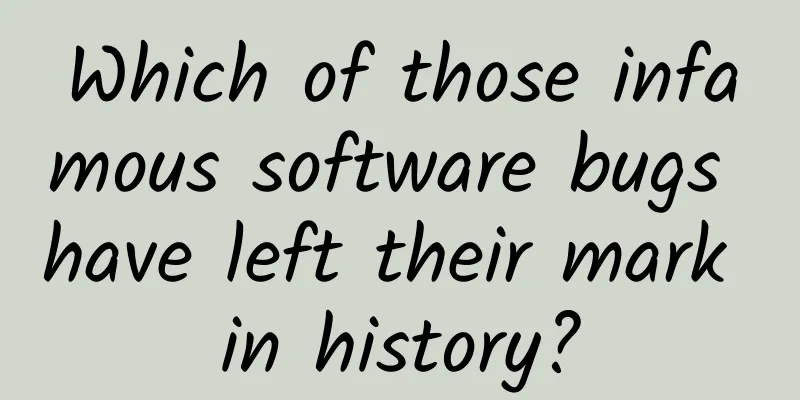Why is radar called the "clairvoyance" in modern warfare?

|
Radar is a device that uses electromagnetic waves to detect targets. It measures the position parameters and motion parameters of targets and extracts relevant technologies of targets by emitting electromagnetic signals and receiving signals reflected from targets. Military radar is a radio detection and positioning device designed and manufactured for specific military purposes. It is one of the important means to obtain all-weather and all-day strategic and tactical intelligence on land, sea, air and space battlefields. It is the primary visual sensor of air defense, sea defense and land defense weapon systems and command automation systems. Therefore, it has been widely used in warning, reconnaissance, and enemy identification. The radar system mainly includes: a radar transmitter that generates high-power radiation signals; an antenna that radiates signals into space and receives signals reflected from targets; a radar receiver that amplifies, filters and transforms weak received signals; a radar terminal device that processes, records and displays radar signals; a radar servo device that controls the rotation of the radar antenna and controls and records the antenna beam pointing data; a frequency synthesizer and timer that coordinates the work of various radar subsystems, etc. There are many ways to classify military radars. The main commonly used classification methods include by function, by technical system, by working wavelength, by carrier platform, etc. Military radar is called the "clairvoyance" of modern warfare and is the core equipment of current electronic warfare and information warfare. The current advanced radar can not only detect stealth aircraft, ballistic missiles, ground forces, and maritime formations from a distance, but also accurately control the tracking and guidance of strike weapons to targets, as well as conduct continuous reconnaissance and surveillance of key areas, obtain high-definition battlefield intelligence, and integrate into the "observation-confirmation-decision-strike" combat process loop to a deeper degree, playing a pivotal role in information-based joint operations. The importance of military radar is mainly reflected in three aspects: ① Military radar is a detection means that can obtain information about the target battlefield environment in real time, actively, and all-weather in combat command systems at all levels; ② Military radar is an indispensable component of various advanced combat platforms and a necessary means to achieve long-range strikes and precision strikes; ③ Military radar is a test means for evaluating various advanced weapon systems and conducting military technology research. Radar is the main tactical equipment for battlefield reconnaissance, surveillance and intelligence search. It is the main technical means of battlefield situation awareness and rapid response. Its performance and effectiveness determine the battlefield combat effectiveness and survivability of our forces. The rise of radar Bidding farewell to the era of cold weapons, the combat distance of modern warfare has long exceeded the range visible to the naked eye. Whether you can anticipate the enemy and take the initiative in battle determines the outcome of the war. In the early 1930s, British physicist Robert Watson Watt worked on a device to track thunderstorms. Watt spent a long time developing a system that used an oscilloscope to plot their location, and eventually the British government officially used the system to detect enemy aerial weapons. When an oscilloscope was used to receive the voltage that bounced back from the aircraft, it turned into a photoelectric signal on the screen, and then combined the delay of the signal with a calibrated scale, early radar was created. In 1939, the British successfully developed a new radar technology called "resonant cavity magnetron", which raised the precision of radar detection to an unprecedented level and changed the rules of the game of war. The British used radar to destroy and intercept more than 12,000 German bombers during World War II, preventing cities like London from becoming scorched earth. Early military radars used mechanical scanning to transmit radio waves into the air to detect enemy aircraft target information. Since then, fighters and radars have been engaged in a "spear" and "shield" contest for more than half a century. Since mechanical radars need to aim the "pot lid antenna" at aerial targets, they have slow response speeds and are prone to failures when detecting high-altitude and high-speed second-generation aircraft. "Faster, farther, and more reliable" has become the research and development goal of the new generation of radars. Britain, the United States and other countries have taken the lead in developing planar array antennas, which radiate electromagnetic waves through array gaps and synthesize them in space, effectively enhancing antenna gain and extending detection distance while reducing the size and weight of radars. In several local wars during the Cold War, the flight speed and low-altitude performance of the third-generation aircraft have been greatly improved, resulting in an exponential increase in radar blind spots, and a large number of fighters have successfully achieved low-altitude penetration with the help of mountain terrain. The changes in the "spear" have led to the upgrade of the "shield". In order to display the information of the detected object in a timely and effective manner, the radar must use a computer to provide accurate calculation data. When the fighter is flying at a low altitude, the echo signal of the fighter is mixed with the ground clutter and is often automatically filtered by the radar. Some European and American countries have developed pulse Doppler radars, which apply algebraic methods and filtering theory in data processing machines to analyze the frequency changes of the echo of moving targets and find fighters hidden in the noise background. The air forces of some countries also carry pulse Doppler radars on early warning aircraft to suppress the enemy's low-altitude operations in a "looking down" manner. In the 1980s, electronic scanning phased array radars experienced a development from passive to active. Advanced active phased array radars disperse the entire transmitter to thousands of transceiver components, through which the radar beam direction is changed. This radar antenna is similar to the "compound eye" of a dragonfly. Not only can the "body" and "eyeball" move, but it can also aim at different directions and track different targets at the same time. Not only that, with the development of data processing technology, radars have made great progress in dealing with new combat methods such as swarm warfare, and powerful signal analysis capabilities can detect low-altitude and group targets. At the same time, countries have carried out research on miniaturized radars, and land-based, airborne, ship-borne and other types of radars have emerged in an endless stream, and their application scenarios are becoming more and more extensive. ▏Meter-wave radar becomes the nemesis of stealth fighters In 2018, the U.S. Navy announced that it would allocate up to $2 billion in its annual budget to develop new jammers, enhance its ability to counter advanced meter-wave radars, and maintain its stealth combat advantage. Meter-wave radar refers to a radar with an operating wavelength of 1 to 10 meters or a frequency of 30 to 300 MHz. The anti-stealth characteristics and mechanisms of meter-wave radar have long been known. In a series of local wars that broke out in the 1990s, NATO almost always used stealth fighters and anti-radiation missiles to lead the way before launching air strikes, suppressing and destroying the opponent's air defense and communication systems, seizing air superiority, and then conducting large-scale bombing to force the opponent to submit. In the Kosovo War in 1999, the United States' "ace" stealth fighter F-117 was shot down by the Soviet-made air defense weapon system of the Federal Republic of Yugoslavia, causing an uproar in world public opinion. Although the details have not been declassified, according to the consensus of scholars and experts in the industry, it should be an old-fashioned Russian meter-wave radar that discovered the F-117, and then provided the location data to the "Sam"-3 system, controlling the air defense missile to shoot it down in one fell swoop. This incident announced to the world that the myth that stealth aircraft cannot be shot down has been shattered, and it was this meter-wave radar that played a key role. Technically speaking, the radar reflection area of a stealth fighter is only a few tenths of a square meter. For example, the radar reflection area of the F-117 is 0.01㎡ (smaller than the current 0.1㎡ of the F-22 and 0.5㎡ of the F-35), and the radar reflection area of the "Tomahawk" cruise missile is only 0.03㎡. Why can the meter-wave radar detect it? The main reason is that such a small radar reflection area value is for microwaves. When the frequency drops to meter waves, the size of the aircraft and the wavelength of the radio wave are very close, and the two will resonate, greatly increasing the radar reflection area of the aircraft. In the meter-wave band, the radar reflection area of the F-117 can be as high as 10~20㎡, which is three orders of magnitude larger, so stealth aircraft or missiles will be exposed under the irradiation of meter-wave radar. However, everything has duality. From the perspective of weapons, meter-wave radar also has weaknesses: first, the antenna is large in size, the entire weapon system has poor mobility and is vulnerable to attack. Second, there is the problem of anti-interference. In the meter-wave band, the electromagnetic environment is seriously interfered with, and there is also strong sky noise interference, which needs to be eliminated by various means. Third, the antenna beam of the meter-wave band is wide and the measurement accuracy is not high. Especially at low elevation angles, the measurement accuracy is further reduced. Generally speaking, the measurement accuracy of meter-wave radar is not as good as that of microwave radar. Therefore, some major military powers use meter-wave radars for early warning and search for stealth targets. High-precision target identification, especially missile tracking and guidance, still chooses microwave radar to complete. If it is not improved, meter-wave radar can only be used for air defense warning, not for weapon guidance, and cannot efficiently track stealth fighters. In view of this, some countries have upgraded and improved meter-wave radars. In the 1970s, the French National Aeronautics and Space Agency began to develop meter-wave integrated pulse aperture radar. This advanced radar uses sparsely arranged omnidirectional antenna units to achieve wide-pulse omnidirectional radiation of radar waves, and then uses computers to analyze the ground reflection signals. It can accurately detect the distance, direction, altitude and instantaneous speed of the target, and its anti-interference performance has been significantly enhanced. Russia has integrated phased array technology into meter-wave radar, increasing the scanning speed while reducing the size and weight of meter-wave radar, and developed a vehicle-mounted mobile meter-wave three-coordinate radar to enhance the detection capability of fighter aircraft altitude and speed. It can track various air targets such as fighter aircraft and cruise missiles, and can even detect small hypersonic missiles and small stealth aircraft 600 kilometers away, greatly improving the level of detection and electronic countermeasures. ▏China's anti-stealth radar There are currently multiple technical development paths for anti-stealth radars in the world, and my country can be said to be in a leading position in all technical paths. Domestic anti-stealth radars can solve problems such as detection and tracking of stealth targets. The relevant technologies are comparable to international levels, and may be ahead in some areas. my country has successively launched multiple anti-stealth radar models. At present, a complete set of anti-stealth early warning systems has been formed. One type of radar is a representative model of the fourth generation of intelligence radar, known as the "all-around champion radar". It can deal with stealth fighters, fixed-wing aircraft, helicopters, drones, cruise missiles and even positioning artillery and rockets. Its uses far exceed many other similar radars. The other type of radar can be used as the core of long-range early warning in the air defense network. It has the characteristics of long detection distance, high measurement accuracy, and strong anti-interference ability. It can detect stealth targets and high-speed and highly maneuverable targets in near space. There is also a mobile early warning phased array radar that is famous for its strong anti-stealth capability, and its main performance indicators are better than similar foreign radar products. It is particularly worth mentioning that the large number of various chips in this type of radar, as the core components of the radar, are all independently developed by my country. There is also a kind of anti-stealth radar, which is a passive radar that does not actively emit electromagnetic waves, also known as a dark sentinel radar. It can detect, locate and track stealth fighters by monitoring the slight changes in the reflection of civilian FM broadcast signals by stealth fighters. ▏The development prospects of radar Radar can detect and track various targets in the air, at sea, and on land, and is an important means to assist in achieving long-range precision strikes. It is bound to develop in these directions in the future. 1. Integration Driven by high-tech technologies such as digital arrays, artificial intelligence, and chips, radars equipped with "technological eyes" have started to "soar" all the way, and future development will show multiple trends - integration. In the future battlefield, radars will not fight alone, but will cooperate with other weapon systems. In combat, there must be both radar equipment for target detection and communication systems for information transmission. In order to maximize resource utilization and diversify functions, combat platforms will integrate radar and communication systems for better coordinated combat. Sweden and Italy have extensive experience in the joint research and development of multifunctional phased array systems. By adding high-power amplifiers to broadband receiver modules and increasing the signal frequency reception range, they have perfectly integrated radar, communication, and electronic warfare systems, which not only reduces maintenance costs but also improves battlefield situation awareness. 2. Networking With the vigorous development of electronic countermeasure technology, researchers have tried to deploy radars of different systems together to form a large "fishing net", which can not only expand the coverage, but also complement each other and give full play to the advantages of various types of radars. Through the coordinated detection of multiple radars in the network, the performance bottleneck of single radar detection can be broken through, and the radar can be covered with a "stealth coat". For example, a new Russian networked radar is composed of multiple radars such as long-range warning, tracking and identification, and precision guidance. It not only has the advantages of resisting anti-radiation missiles, but also has higher angular resolution, better parameter calculation accuracy and stronger anti-interference ability than ordinary radars, truly achieving the networking effect of "1+1>2" and meeting various air defense needs and combat scenarios. 3. The increasing maturity of intelligent artificial intelligence technology provides strong technical support for the development of radar. In the future, intelligent radars will have autonomous behavior capabilities such as environmental adaptive perception, information acquisition and processing, and resource scheduling, and will be more adaptable to complex and changeable electromagnetic confrontation environments. In particular, multifunctional integrated radars that integrate air defense, anti-missile and other tasks, warning, guidance, and guidance are just around the corner. At present, all the world's military powers have proposed plans to develop adaptive radars, which can defend based on enemy airborne radio signals, sense the surrounding environment and automatically implement interference. With the application of more new technologies, new materials and new processes, radar development will surely usher in a new round of active period and play a more important role in future battlefields. (Pictures from the Internet) Author | Gu Jun Zhe is a master of computer science and technology. After graduation, he has been engaged in the collection and organization of online information, paying attention to popular science knowledge and exploring cutting-edge technology. |
<<: Danger! Mobile phone chargers can actually cause fires!
>>: What does a data relay satellite do? How did it develop?
Recommend
Is steam eye mask a waste of money?
There are more and more ways to entertain in mode...
Why are plagiarized short videos more popular than original ones? Why is your copy not popular?
Some people always feel that the whole world is a...
National Eye Care Day丨Don’t believe these 10 rumors about eyes →
As the saying goes, "eyes are windows to the...
Global warming: A detailed explanation of the 2021 Physics Nobel Prize for complex stochastic systems
According to the official website of the Nobel Pr...
The OLED industry is facing a competition between Chinese and Korean companies. Is overcapacity just around the corner?
On October 26, BOE's Chengdu 6th generation f...
Android apk anti-decompilation technology Part 1 - Packing technology
I have been working on Android framework for near...
After reading these brand copywriting, let’s talk about what “copywriting tone” is
The first time I heard the word "tonality&qu...
Which part-time job platform is best? Which platform is best for part-time work with daily pay?
Which part-time job platform is best? Which platf...
Talking about IP operation from the perspective of Perfect Diary’s marketing
Nowadays, with the continuous development of bran...
Who will win the smart fitness market, Google or Apple?
The Apple Watch is coming on strong. The battlefi...
Monthly sales of new energy vehicles hit a record high, and overseas sales exceeded last year's total sales. In November, SAIC sold 515,000 vehicles
(Shanghai, December 6, 2023) Today, SAIC Motor re...
It took several weeks to remove the parasite from the patient's body.
The species calendar I wrote before was about the...
Honda China: Honda China sales in January 2025 were 68,890 units, down 31.8% year-on-year
Recently, Honda China released its January sales ...
One picture will help you understand the National People’s Congress and the Chinese People’s Political Consultative Conference!
The two sessions have begun! How much do you know...
More than 300 expressions! Cats are not as cool as you think
Science and Technology Daily, Beijing, November 1...









